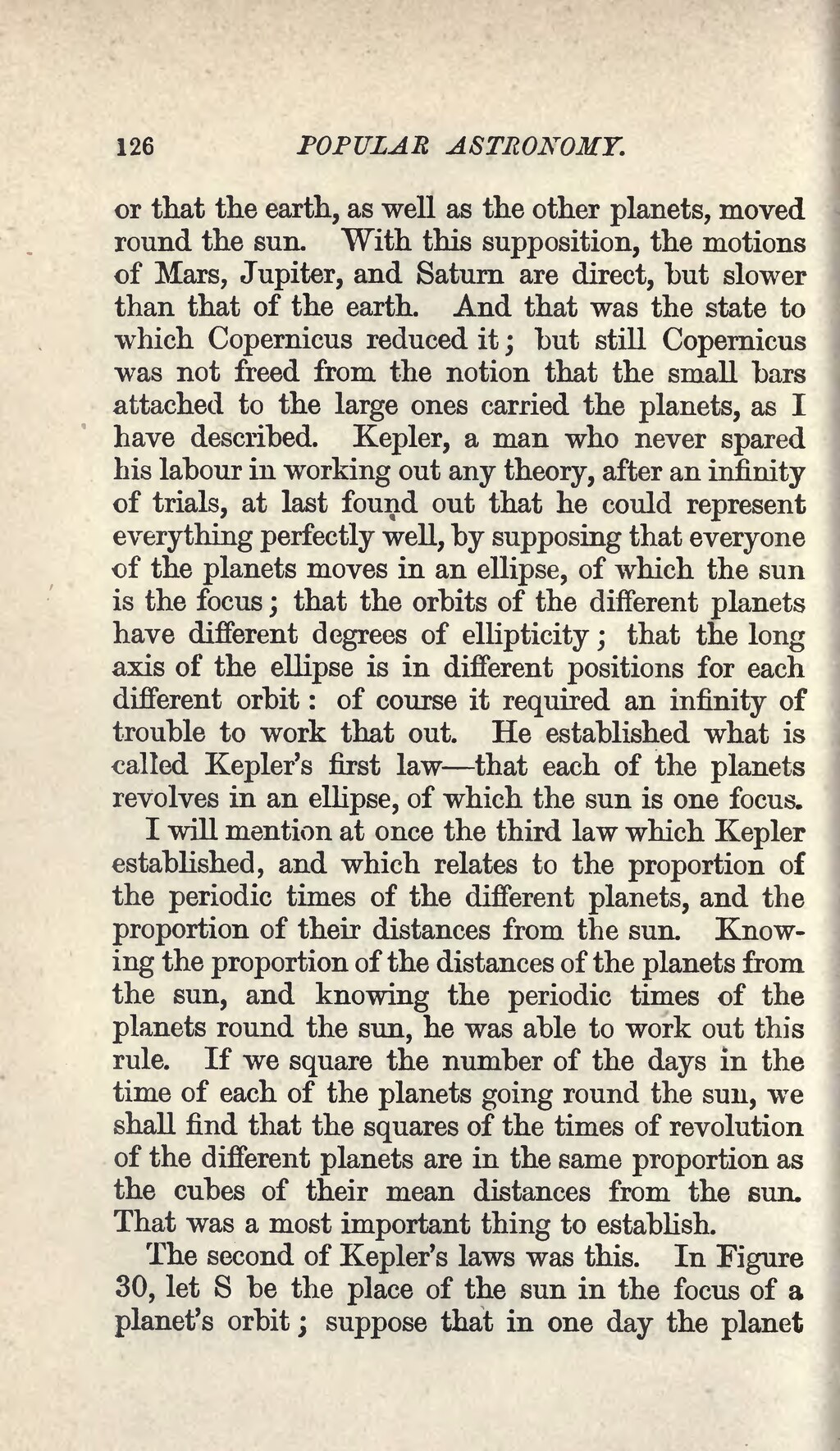or that the earth, as well as the other planets, moved round the sun. With this supposition, the motions of Mars, Jupiter, and Saturn are direct, but slower than that of the earth. And that was the state to which Copernicus reduced it; but still Copernicus was not freed from the notion that the small bars attached to the large ones carried the planets, as I have described. Kepler, a man who never spared his labour in working out any theory, after an infinity of trials, at last found out that he could represent everything perfectly well, by supposing that everyone of the planets moves in an ellipse, of which the sun is the focus; that the orbits of the different planets have different degrees of ellipticity; that the long axis of the ellipse is in different positions for each different orbit: of course it required an infinity of trouble to work that out. He established what is called Kepler's first law—that each of the planets revolves in an ellipse, of which the sun is one focus.
I will mention at once the third law which Kepler established, and which relates to the proportion of the periodic times of the different planets, and the proportion of their distances from the sun. Knowing the proportion of the distances of the planets from the sun, and knowing the periodic times of the planets round the sun, he was able to work out this rule. If we square the number of the days in the time of each of the planets going round the sun, we shall find that the squares of the times of revolution of the different planets are in the same proportion as the cubes of their mean distances from the sun. That was a most important thing to establish.
The second of Kepler's laws was this. In Figure 30, let S be the place of the sun in the focus of a planet's orbit; suppose that in one day the planet
